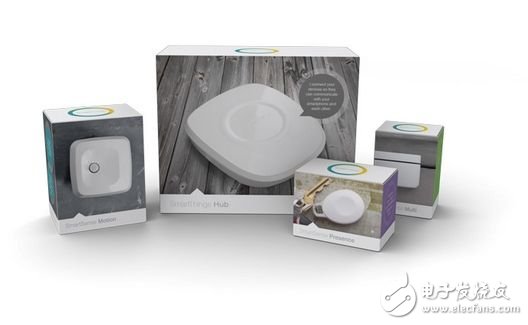Samsung's 200 million US dollars whale swallow smart home controller company SmartThings
Beijing time on August 15 morning news, Samsung has acquired smart home controller startup SmartThings. Samsung did not disclose the price of the deal, but the US technology blog Re/code quoted sources as saying that Samsung paid about $200 million. Samsung said SmartThings will continue to be headed by current CEO and founder Alex Hawkinson and will operate independently. However, most of the company's business operations, including 55 employees in Washington, DC, and offices in San Francisco and Minnesota, will be relocated to Palo Alto, Calif., to join Samsung's local Open Innovation Center. The head of Samsung's division is Google and AOL's former executive David Eun, focusing on software and service innovation. For example, the department recently helped launch an app called Terrain that provides users with a list of cards that provide easy access to information, content, social network traffic, frequently accessed information, and device settings. In an interview, Hawkingson said that Samsung’s acquisition will help the company accelerate its development. “I think that at a higher level, our goal is to grow and develop.†He said, “This is a matter of scale and how to cover the world, including hundreds of millions of users and more developers.†He pointed out that Samsung operates globally, spans a wide range of consumer appliances, and has many retail channels. Samsung's acquisition of SmartThings transaction amounted to 200 million US dollars Similar to the Oculus VR recently acquired by Facebook, SmartThings started with a Kickstarter project in 2012. The company subsequently raised more than $15 million, including Greylock Partners, Highland Capital and First Round Capital. Recently, a series of heavyweight acquisitions took place in the home automation market, the most notable of which was Google’s acquisition of Nest for $2.2 billion earlier this year. SmartThings focuses on connecting door locks, lights and other home devices to mobile applications. SmartThings sells kits for less than $200, including basic routers and small sensors. These sensors can be connected to home devices and connected to a WiFi network. Users can then control these devices through SmartThings' iPhone app. However, SmartThings doesn't stop there, it's a platform, and Hawkingson thinks this platform should be as open as possible. Hawkingson said that through the open platform, others can develop new applications to develop the ecosystem of SmartThings. This will be a key differentiating element. Eun said that Samsung is also attracted by such openness. He said: "Samsung focuses on smart homes and connected devices, and has already portrayed such a goal. But because consumers have many different devices, the industry will move toward openness." Hawking said that SmartThings' revenue is growing and currently supports more than 1,000 devices, and 5,000 developers have developed 8,000 applications for the platform.
A siren is a loud noise-making device. Civil defense sirens are mounted in fixed locations and used to warn of natural disasters or attacks. Sirens are used on emergency service vehicles such as ambulances, police cars, and fire trucks. There are two general types: pneumatic and electronic.
Many fire sirens (used for calling the volunteer fire fighters) serve double duty as tornado or civil defense sirens, alerting an entire community of impending danger. Most fire
sirens are either mounted on the roof of a fire station or on a pole
next to the fire station. Fire sirens can also be mounted on or near
government buildings, on tall structures such as water towers,
as well as in systems where several sirens are distributed around a
town for better sound coverage. Most fire sirens are single tone and
mechanically driven by electric motors with a rotor attached to the
shaft. Some newer sirens are electronically driven speakers.
Fire sirens are often called "fire whistles", "fire alarms", or
"fire horns". Although there is no standard signaling of fire sirens,
some utilize codes to inform firefighters of the location of the fire.
Civil defense sirens also used as fire sirens often can produce an
alternating "hi-lo" signal (similar to emergency vehicles in many
European countries) as the fire signal, or a slow wail (typically 3x) as
to not confuse the public with the standard civil defense signals of
alert (steady tone) and attack (fast wavering tone). Fire sirens are
often tested once a day at noon and are also called "noon sirens" or
"noon whistles".
The first emergency vehicles relied on a bell. Then in the 70s,
they switched to a duotone airhorn. Then in the 80s, that was overtaken
by an electronic wail.
Piezo Alarm,Siren And Alarm,Piezo Buzzer Siren,Piezo Buzzer Alarm Siren Jiangsu Huawha Electronices Co.,Ltd , https://www.hnbuzzer.com